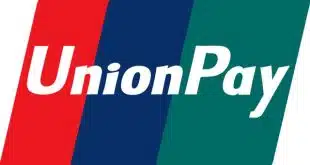Apple Pay pulled up to the fuel pump at ExxonMobil Corp. gas stations with the release last month of Speedpass+, an iOS app that enables consumers to use Apple Inc.’s mobile-payment service to pay within the app for fuel at the pump.
The app is available for Android devices. It also works with checking accounts, credit and debit cards from all four major brands, and ExxonMobil’s private-label card. Currently, more than 6,000 ExxonMobil stations accept Speedpass+, with the total to reach approximately 8,000 later this year, ExxonMobil says.
After downloading the app onto a smart phone, the consumer configures the funding account via the app. In the case of Apple Pay, no configuration is necessary because the integration is automatic if the consumer has set up Apple Pay.
To add a card, the consumer types in her payment information from the credit or debit card. To add a checking account, which ExxonMobil advises takes two to three days for activation, account and routing numbers are needed as is the consumer’s driver’s license number and issuing state.
To use the app, which includes a locator function to find stations that accept Speedpass+, the consumer launches it when at the pump. She taps Pay for Fuel and enters the pump number. The app authorizes the transaction—in the case with Apple Pay—when the consumer presses a finger against an iPhone’s Touch ID sensor.
The app uses the phone’s GPS to locate the device. If that not is not available, the consumer can use the app to scan a Quick Response code on the pump.
Consumers also have the option to add a car wash and pay for it in the app. The app tracks purchase histories.
ExxonMobil’s app for pay-at-the-pump inspired one payments analyst to tweet “Exxon/Apple Pay tie up is scary news for POS hardware vendors.” That was from 451 Research senior analyst Jordan McKee, who also noted that in-app payments “pose a very real existential threat.”
As McKee explains to Digital Transactions, the ExxonMobil/Apple Pay feature portends the morphing of consumer smart phones and tablets into the payment device.
As smart phones become more ubiquitous and consumers become more comfortable using them for actual purchases, the need for [dedicated] POS equipment may decline, McKee says. “It’s definitely on VeriFone and Ingenico’s radar,” McKee says, referring to the two giant point-of-sale terminal makers, VeriFone Systems Inc. and Ingenico Group.
Eventually, it may come to the point where many consumer payments will not need a conventional terminal, he says, as with Uber, Lyft and other Web-only merchants that push the payment into the background. “Eventually, we will hit a point where you can use a smart phone to connect to the cloud and complete a transaction,” he says.
While such a shift may present challenges for the POS terminal makers, McKee does not discount their competitiveness. “Ingenico has made some moves in the [merger and acquisitions] space to broaden their influence,” he says. Similarly, VeriFone has too.
For ExxonMobil, in addition to improving customer convenience, Speedpass+ may aid its EMV upgrade efforts. Under the card networks’ liability shifts, merchants whose terminals can’t read an EMV card will bear liability for any resulting counterfeit fraud. That happens in October 2017 for fuel pumps.
“Perhaps they’re testing the waters with this application,” McKee says. It may, perhaps, lessen the need to upgrade every pump to EMV, he says.
ExxonMobil is not the first fuel retailer to use an app for paying at the pump. Cumberland Farms, a fuel retailer with almost 600 stores in the Northeast, said in October 2015 its SmartPay program racked up $1 billion in fuel sold since the app launched in 2012.
SmartPay encourages consumers to use a checking account as the funding source. Doing so nets a 10 cent per-gallon reduction in gas prices. And consumers can use SmartPay inside Cumberland Farms convenience stores. ExxonMobil says that feature is not yet available.
—Kevin Woodward




